 Sagittarius A-Star is the follow up label to Qbico and has quickly unleashed a good number of LPs. Â This particular gem was retrieved from the archives of Hartmut Geerken and finds him in a quintet recorded in the city of Heliopolis, Egypt during the month February of 1972, also known as the month Muharran in the Muslim year 1392. Â Joining Geerken are Michael Ranta, Hubertus von Puttkamer, Omar el Hakim, and Salah Ragab. Â Apparently this was a one off meeting of the minds as the group name seems to have only been applied now that this music is being published on vinyl 40 years later. Â It is an interesting grouping and probably one whose members do not ring a lot of bells unless you read lots of little details on various records. Â So a little background…
Sagittarius A-Star is the follow up label to Qbico and has quickly unleashed a good number of LPs. Â This particular gem was retrieved from the archives of Hartmut Geerken and finds him in a quintet recorded in the city of Heliopolis, Egypt during the month February of 1972, also known as the month Muharran in the Muslim year 1392. Â Joining Geerken are Michael Ranta, Hubertus von Puttkamer, Omar el Hakim, and Salah Ragab. Â Apparently this was a one off meeting of the minds as the group name seems to have only been applied now that this music is being published on vinyl 40 years later. Â It is an interesting grouping and probably one whose members do not ring a lot of bells unless you read lots of little details on various records. Â So a little background…
Hartmut Geerken is German born, but widely travelled and thoroughly educated. Â Because of his great learning and mastery of languages he worked for the Goethe Institute in Cario (1966-72), Kabul (1972-1979), and Athens (1879-1983). Â The years in Egypt seemed to be particularly musically significant as he brought Sun Ra there in 1971, and also co-founded the Cairo Jazz Band and Cairo Free Jazz Ensemble. Â Over the decades he has also worked with Michael Ranta (on an extensive tour of eastern Asia), Embryo, a trio with John Tchicai and Famoudou Don Moye, The Art Ensemble of Chicago, Sunny Murray, Don Cherry, Peter Kowald, Takehisa Kosugi, Toshi Ichiyanagi, and Sainkho Namtchilak. Â His involvement with sound and visual poetry also has seen him collaborate with Robert Lax, Carlfriedrich Claus, and Valeri Scherstjanoi. Â However, it has only been in the last decade or so that the floodgates have really opened up and allowed much of this work to be heard on record.
Michael Ranta is an American percussionist based in Germany who has worked with heavy weights Harry Partch, Mauricio Kagel, Helmut Lachenmann, Josef Anton Riedl, Karlheinz Stockhausen, Jean-Claude Eloy, Takehisa Kosugi, Toshi Ichiyanagi, and of course Hartmut Geerken. Â He blew many heads as part of the group Wired whose sole release was the third LP in the Deutsche Grammophon box set “Free Improvisation” and which was produced by Krautrock legend Conny Plank. Â His trio with Takehisa Kosugi and Toshi Ichiyanagi from 1975 was captured on a very obscure private LP that almost no one had even heard of until it was bootlegged in recent years. Â Since that time people have gotten a little better about digging up his work including the overlooked “Mu V / Mu VI” LP that he self released in 1984. Â In 2010, the Belgian label Metaphon rescued the earlier numbers of the Mu series of works performed by a line up similar to Wired.
Hubertus von Puttkamer remains a rather obscure figure although released the double CD “Weltmusik” in collaboration with Johannes Schmölling in 2004.  He apparently lived in Egypt around the period of the Muharran 1392 recordings and met the members of Agitation Free during this time and filmed them at the pyramids of Sakkara.  It was this band, as well as Sun Ra and Tangerine Dream that awoke in him the potential for the synthesizer which has used to create multitrack recordings over the ensuing years.  But music appears to just be his hobby as his professional proficiency is in laser measurement.
Omar el Hakim is an Egyptian architect and Tai Chi teacher. Â According to Geerken, “he had crazy ideas, for example to construct half underground mud houses in the desert for cultivating fungi.” Â He seems to have long since disappeared from the music scene and was last heard of teaching architecture in the United Arab Emirates.
Salah Ragab is considered one of the founders of Egyptian jazz. Among other things he was co-founder of the Cairo Jazz Band and Cairo Free Jazz Ensemble with Geerken, and was also in a quartet with Geerken and Puttkamer called The Cross which has apparently never released anything.  Ragab also had a connection with Sun Ra, but unlike the other characters mentioned above appears on a quite a few of Ra’s LPs.  As his music ventured out of the avant-garde, he’s had a number of other records out and like the others mentioned above, his work is slowly appearing on more releases these days.  Unfortunately, he passed away in 2008.
So now that the history lesson is over, what does the music sound like on Muharram 1392?  It is quite a free form affair that does not draw much from jazz, classical or Egyptian music.  The two sides constantly evolve overlapping textural sounds with a wide variety of instrumentation.  None is listed on the cover, but I think I hear piano, guitar, horns, maybe an electric organ or synthesizer and lots of different percussion.  It does seem to be a blend of European and Egyptian sources, but it could also be the approach to playing that lends certain things a little Arabic color.  Like I said, the playing is very open and languorous which makes me think of the very out moments of L.A.F.M.S. characters.  Panned heavy left and right it is possible to focus in on the individual elements of the ensemble as only a couple instruments will be heard in each channel with little bleed through.  As anarchic as the music is, it never veers into over the top aggression not lapses into ambient background.  There is always something going on and if you focus on one of the patterns for too long, you find that someone else has meanwhile changed instruments and varied the overall picture. The rather minimal musical material and lack of a specific direction makes for a beautiful hazy atmosphere which rewards close attention.
I’ve only seen one source mention an edition size and that was 200 copies, which kind of makes sense as just about all of the Sagittarius A-Star releases sell out immediately upon release.  Despite that tiny run, the LP does come in color jacket.  The labels are plain white (side A) and black (side B) with the A side marked by a rubberstamped letter.  I think it is mastered a bit low, but in the end that seems to suit the flavor of the music.  26 copies of this were also included in “The Geerken Box” which additional contains the LPs “Brasilia in Waitawhile” (with Famoudou Don Moye, Edison da Luz, Junior Cardoso, and Valmon Rodriguez da Silva) and “Stalllife” (with Russian sound poet Valeri Scherstjanoi) with some extra inserts, artwork and photographs.  Unfortunately I have not heard either of these other two LPs nor a lot of the other recent SAS releases, among which there seem to be a lot of winners.
Sagittarius A-Star – SAS #17
www.sensationalxhols.org/sagittarius_a
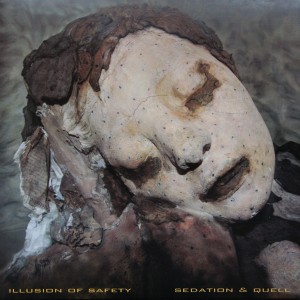 Long since reduced to the core of Dan Burke, and having shed more famous members such as Jim O’Rourke and Thymme Jone, IOS is still serving up multilayered works, demonstrating how much of the group’s sound stems from Burke’s own explorations.  The two pieces that make up this release forgo the shock tactics of the earliest releases and focus on a more diffuse malaise.  Two other reviewers have made a comparison to the work of The Hafler Trio, and that is easy to see as the central component on this record is the type of rich drones so prominent on later releases from H3O.  However, IOS sidesteps the pseudoscience  and pomposity that come as baggage with any of Andrew McKenzie’s work.  Anyhow, “Sedation” is unsurprisingly, given its title, the more subtle of the two beginning as it does in the most faint manner, shifting after a swash of static-like sounds which ushers in a fuller but still diffuse, calm atmosphere.  Progression continues slowly, adding layers to the sound which occupy distinct sections of the frequency range.  After the half way point, drifting bass tones which remind me of the earlier Organum shimmer through.  “Quell” retains more of the tension that I associate with Illusion of Safety as the drone are more machine-like, although less abrasive than the work of Vivenza.  The track starts with medicine chest’s question in George Lucas’ film “THX1139”: “What’s wrong?”  From there it sets free the anxiety lurking within.  As a coda to “Sedation”, “Quell” ends with a very airy trailout as if to prepare you to flip the record back to its A side.  Of course there is more detail found on both sides, but I don’t feel that an in depth analysis of every component allows staying focused on the overall atmosphere.  Has Illusion of Safety softened? Perhaps not, and more likely this is a rare gift from Dan which allows a deeper sinking into the drone without the usual jarring wake up call.  The record totals around 20 minutes and is pressed on translucent yellow vinyl which is wrapped in a full color jacket.
Long since reduced to the core of Dan Burke, and having shed more famous members such as Jim O’Rourke and Thymme Jone, IOS is still serving up multilayered works, demonstrating how much of the group’s sound stems from Burke’s own explorations.  The two pieces that make up this release forgo the shock tactics of the earliest releases and focus on a more diffuse malaise.  Two other reviewers have made a comparison to the work of The Hafler Trio, and that is easy to see as the central component on this record is the type of rich drones so prominent on later releases from H3O.  However, IOS sidesteps the pseudoscience  and pomposity that come as baggage with any of Andrew McKenzie’s work.  Anyhow, “Sedation” is unsurprisingly, given its title, the more subtle of the two beginning as it does in the most faint manner, shifting after a swash of static-like sounds which ushers in a fuller but still diffuse, calm atmosphere.  Progression continues slowly, adding layers to the sound which occupy distinct sections of the frequency range.  After the half way point, drifting bass tones which remind me of the earlier Organum shimmer through.  “Quell” retains more of the tension that I associate with Illusion of Safety as the drone are more machine-like, although less abrasive than the work of Vivenza.  The track starts with medicine chest’s question in George Lucas’ film “THX1139”: “What’s wrong?”  From there it sets free the anxiety lurking within.  As a coda to “Sedation”, “Quell” ends with a very airy trailout as if to prepare you to flip the record back to its A side.  Of course there is more detail found on both sides, but I don’t feel that an in depth analysis of every component allows staying focused on the overall atmosphere.  Has Illusion of Safety softened? Perhaps not, and more likely this is a rare gift from Dan which allows a deeper sinking into the drone without the usual jarring wake up call.  The record totals around 20 minutes and is pressed on translucent yellow vinyl which is wrapped in a full color jacket.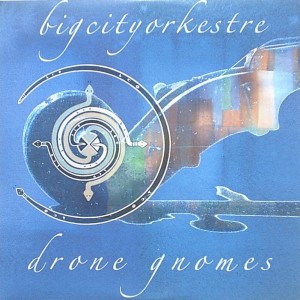 BCO have been active over 30 years now during which time they have unleashed a massive amount of releases.  Unlike a lot of artists working in the same time span, and with the same pace of output, Das is continually exploring new directions.  In other words, BCO releases have a lot more variety than those of Merzbow and Muslimgauze.  Despite using the word “drone” in their title as well as being on Drone Records, it is not a drone we find on the A side.  Instead that there is a really peaceful take on gamelan with the rather silly title “Cockiness Breeds Carelessness”.  Is it possible they are taking a pot shot as the serious nature of most releases on this label?  Hard to say for sure as humor is common thread throughout the history of this band.  Anyhow, I am not clear if they are using actual gamelan instruments, or something they built to sound similar, which is quite possible and in line with the creative directions taken by the group outside the purely sonic aspects.  The rapid chiming falls together in a beautiful rhythm over a simple percussive pulse and faint notes of flute while wordless female vocals float above.  Given that seven performers are credited (Ninah Pixie, Jesse Burson, Kerri Pidnow, Peter Martin, Melissa Margolis, Mike Dringenberg, and Das), I am probably failing to tease out a few elements.  Then again, a few of those might be reserved for the second side, “Rope Coiling Log”.  This side presents a more hazy atmosphere with a dominant harmonium like drone, a slow bass pulse, a rather subtle shimmering, and some distant cavernous sounds.  These sounds mix together in a more ambient environment then the first side with less forward motion which fits the overall release title better.  It is a nice mysterious B side which works because it is a contrast with the A side.  They compliment each other as the X and Y axis, as the sides are labeled on the cover, of exploration.  One moves forward in a horizontal direction, while the other’s focus is on vertical accumulation.  “Drone Gnomes” is a further installment in Drone’s Substantia Innominata series, again pressed in an edition of 500 copies, this time on nice marbled blue vinyl.  Running about 15 minutes on each side, this is probably more of a mini-album than a single.
BCO have been active over 30 years now during which time they have unleashed a massive amount of releases.  Unlike a lot of artists working in the same time span, and with the same pace of output, Das is continually exploring new directions.  In other words, BCO releases have a lot more variety than those of Merzbow and Muslimgauze.  Despite using the word “drone” in their title as well as being on Drone Records, it is not a drone we find on the A side.  Instead that there is a really peaceful take on gamelan with the rather silly title “Cockiness Breeds Carelessness”.  Is it possible they are taking a pot shot as the serious nature of most releases on this label?  Hard to say for sure as humor is common thread throughout the history of this band.  Anyhow, I am not clear if they are using actual gamelan instruments, or something they built to sound similar, which is quite possible and in line with the creative directions taken by the group outside the purely sonic aspects.  The rapid chiming falls together in a beautiful rhythm over a simple percussive pulse and faint notes of flute while wordless female vocals float above.  Given that seven performers are credited (Ninah Pixie, Jesse Burson, Kerri Pidnow, Peter Martin, Melissa Margolis, Mike Dringenberg, and Das), I am probably failing to tease out a few elements.  Then again, a few of those might be reserved for the second side, “Rope Coiling Log”.  This side presents a more hazy atmosphere with a dominant harmonium like drone, a slow bass pulse, a rather subtle shimmering, and some distant cavernous sounds.  These sounds mix together in a more ambient environment then the first side with less forward motion which fits the overall release title better.  It is a nice mysterious B side which works because it is a contrast with the A side.  They compliment each other as the X and Y axis, as the sides are labeled on the cover, of exploration.  One moves forward in a horizontal direction, while the other’s focus is on vertical accumulation.  “Drone Gnomes” is a further installment in Drone’s Substantia Innominata series, again pressed in an edition of 500 copies, this time on nice marbled blue vinyl.  Running about 15 minutes on each side, this is probably more of a mini-album than a single.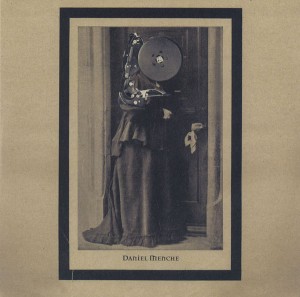
 Referencing 1988 in their name, which they have apparently retroactively changed to
Referencing 1988 in their name, which they have apparently retroactively changed to 
 Normally I try to avoid bootlegs.  Artists are usually getting screwed over enough as it is.  Can has tempted me out of that standard a few times now and in the end I couldn’t resist this latest ‘fan club’ record (as the sales person at the record store called it).  Can’s official albums, at least up to “Soon Over Babaluma”, have been such an important piece of my listening for decades now.  Having listened to these records over and over and knowing them inside and out, I have of course had a desire to here more.  Unfortunately little has been forthcoming from their archives.  So many bands have scraped the bottom of the barrel releasing all manner of things that should have stayed unreleased.  But here is a major band known for their extended live performances and improvisations as well having their own recording studio, and they never let anything out.  Not even bonus tracks on the reissues of their albums, when at least they could have included the two non-album b-sides from their early period.  Thankfully a few things have been leaked over time including BBC sessions and live recordings.  However, most stunning, and rare, have been some of the full length studio recordings.  This LP is the latest of those to appear with any semblance of availability.  The music must have have come from some close source as the sound quality is excellent even if it does have some tape hiss (which makes sense given the technology of the time).  The LP is named after the track which appeared on the “Limited Edition” LP (later reissued as the double “Unlimited Edition”).  But where the original release gave us only a two and a half minute tidbit, this LP is the whole 36 minutes.  Well, the first bit of side one sound like it might be another piece, but the majority is one long jam in the studio.  One thing that becomes obvious when hearing these full recordings is how much Holger’s editing really shaped the official albums by Can.  Anyone really closely listening to the song “Mother Sky” on “Soundtracks” should be able to pick up on how things were stitched together.  Let alone the more subtle work on other tracks throughout their discography.  Holger had a knack for isolating the best bits and putting them together as a complete album.  Which is why I think there have never been bonus tracks on the CD reissues of those albums.  Probably another part was the limitations of the LP format specifically in not accommodating 40 minutes pieces.  Which brings me to one shortcoming of the LP at hand.  The track listing on the back cover is simply “Doko E Part One” and “Doko E Part Two”.  And that is literally what it is.  The music stops at the end of side one to pick up again on side two where it left off.  The edit was at least good and is not totally jarring, but I can see how this would be better as an uninterrupted piece.  Sometimes people’s fetish with vinyl can cause little hiccups like this.  Still I am very glad to hear this whole piece which the officially released very is but a very tiny excerpt of.  The music is really solid throughout and a lot more energy fueled that the restrained, but excellent, “Future Days” album which was recorded around the same time as “Doko  E”.  This title track was seemingly edited down simply for the reason that there so little room on “Limited Edition” to feature so many great pieces.  Again it is criminal that a band of this calibre has so much amazing music in their archives which has been withheld, especially when there is so much substandard music by other artists out there. One unique aspect of this particular session is that Damo sings almost entirely in Japanese and he is a lot more comprehensible when speaking his native tongue.  At least as far as I can tell.  My understanding of Japanese has slipped a lot from lack of use.  ‘Doko e’ roughly translates to ‘going to’ which lines up with the one phrase in English heard here, “Go back to Germany.”  However, I do seem to remember the lyrics for this song being included in Pascal Bussy’s “Can Book”, one of the only times that Damo’s lyrics were committed to print.  The rest often remaining a mystery even to the other members of Can.  A lot of this is no doubt due to Damo’s heavy Japanese accent.  I became acutely aware of this some years back when I saw him ‘solo’ and I couldn’t even understand what he was saying when introducing his band without any music behind him.  Anyhow, despite claims of long time withholding, Can have finally made the first dip into their archives since “Unlimited Edition” for the release of “The Can Tapes”.  Unfortunately the longest tracks on this new triple CD collection fall short of 17 minutes, leaving full length performances like those on “Doko E” still unavailable.  The closest we get is the 29 minute version of “Spoon” on the recently expanded CD version of “Tago Mago” (which even sounds like it might have been edited).  I hope these things are a portent of more to be unleashed, but given the time it took to get here and the remaining member’s advancing age, I don’t expect too much.  So I broke down and bought “Doko E” for now.  Hopefully it will be obsolete some day.
Normally I try to avoid bootlegs.  Artists are usually getting screwed over enough as it is.  Can has tempted me out of that standard a few times now and in the end I couldn’t resist this latest ‘fan club’ record (as the sales person at the record store called it).  Can’s official albums, at least up to “Soon Over Babaluma”, have been such an important piece of my listening for decades now.  Having listened to these records over and over and knowing them inside and out, I have of course had a desire to here more.  Unfortunately little has been forthcoming from their archives.  So many bands have scraped the bottom of the barrel releasing all manner of things that should have stayed unreleased.  But here is a major band known for their extended live performances and improvisations as well having their own recording studio, and they never let anything out.  Not even bonus tracks on the reissues of their albums, when at least they could have included the two non-album b-sides from their early period.  Thankfully a few things have been leaked over time including BBC sessions and live recordings.  However, most stunning, and rare, have been some of the full length studio recordings.  This LP is the latest of those to appear with any semblance of availability.  The music must have have come from some close source as the sound quality is excellent even if it does have some tape hiss (which makes sense given the technology of the time).  The LP is named after the track which appeared on the “Limited Edition” LP (later reissued as the double “Unlimited Edition”).  But where the original release gave us only a two and a half minute tidbit, this LP is the whole 36 minutes.  Well, the first bit of side one sound like it might be another piece, but the majority is one long jam in the studio.  One thing that becomes obvious when hearing these full recordings is how much Holger’s editing really shaped the official albums by Can.  Anyone really closely listening to the song “Mother Sky” on “Soundtracks” should be able to pick up on how things were stitched together.  Let alone the more subtle work on other tracks throughout their discography.  Holger had a knack for isolating the best bits and putting them together as a complete album.  Which is why I think there have never been bonus tracks on the CD reissues of those albums.  Probably another part was the limitations of the LP format specifically in not accommodating 40 minutes pieces.  Which brings me to one shortcoming of the LP at hand.  The track listing on the back cover is simply “Doko E Part One” and “Doko E Part Two”.  And that is literally what it is.  The music stops at the end of side one to pick up again on side two where it left off.  The edit was at least good and is not totally jarring, but I can see how this would be better as an uninterrupted piece.  Sometimes people’s fetish with vinyl can cause little hiccups like this.  Still I am very glad to hear this whole piece which the officially released very is but a very tiny excerpt of.  The music is really solid throughout and a lot more energy fueled that the restrained, but excellent, “Future Days” album which was recorded around the same time as “Doko  E”.  This title track was seemingly edited down simply for the reason that there so little room on “Limited Edition” to feature so many great pieces.  Again it is criminal that a band of this calibre has so much amazing music in their archives which has been withheld, especially when there is so much substandard music by other artists out there. One unique aspect of this particular session is that Damo sings almost entirely in Japanese and he is a lot more comprehensible when speaking his native tongue.  At least as far as I can tell.  My understanding of Japanese has slipped a lot from lack of use.  ‘Doko e’ roughly translates to ‘going to’ which lines up with the one phrase in English heard here, “Go back to Germany.”  However, I do seem to remember the lyrics for this song being included in Pascal Bussy’s “Can Book”, one of the only times that Damo’s lyrics were committed to print.  The rest often remaining a mystery even to the other members of Can.  A lot of this is no doubt due to Damo’s heavy Japanese accent.  I became acutely aware of this some years back when I saw him ‘solo’ and I couldn’t even understand what he was saying when introducing his band without any music behind him.  Anyhow, despite claims of long time withholding, Can have finally made the first dip into their archives since “Unlimited Edition” for the release of “The Can Tapes”.  Unfortunately the longest tracks on this new triple CD collection fall short of 17 minutes, leaving full length performances like those on “Doko E” still unavailable.  The closest we get is the 29 minute version of “Spoon” on the recently expanded CD version of “Tago Mago” (which even sounds like it might have been edited).  I hope these things are a portent of more to be unleashed, but given the time it took to get here and the remaining member’s advancing age, I don’t expect too much.  So I broke down and bought “Doko E” for now.  Hopefully it will be obsolete some day.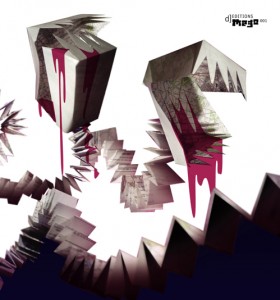 Generally speaking pure electronic music, i.e. that not trying to emulate traditional instruments or music, really started to go downhill for me with the introduction of computers. A few computer assisted things stand out from the old days, like the work done at EMS in Sweden, but overall the general current of electronic music was not helped by digital means. Mego really brought back some of the essential punch with glitch filled noises and chaotic composition when they started up in the 1990s, for me really peaking with the early releases by Hecker. While the label always remained too varied to apply any generalizations with regard to style, this type of work is what captures my ears the most. This duo CD continues on this path mixing contrasting layer of electronic sounds which have a complexity which keeps this interesting. The sounds shift and recombine not unlike Voice Crack, who not coincidentally find their sounds extensively used on the track “Schwarzschild”. Ranging in dynamics, the music avoids the sudden jump cuts of Merzbow but still packs a serious punches in some places. But this depends on the playback volume as listened to quietly the music can be become subtle.
Generally speaking pure electronic music, i.e. that not trying to emulate traditional instruments or music, really started to go downhill for me with the introduction of computers. A few computer assisted things stand out from the old days, like the work done at EMS in Sweden, but overall the general current of electronic music was not helped by digital means. Mego really brought back some of the essential punch with glitch filled noises and chaotic composition when they started up in the 1990s, for me really peaking with the early releases by Hecker. While the label always remained too varied to apply any generalizations with regard to style, this type of work is what captures my ears the most. This duo CD continues on this path mixing contrasting layer of electronic sounds which have a complexity which keeps this interesting. The sounds shift and recombine not unlike Voice Crack, who not coincidentally find their sounds extensively used on the track “Schwarzschild”. Ranging in dynamics, the music avoids the sudden jump cuts of Merzbow but still packs a serious punches in some places. But this depends on the playback volume as listened to quietly the music can be become subtle.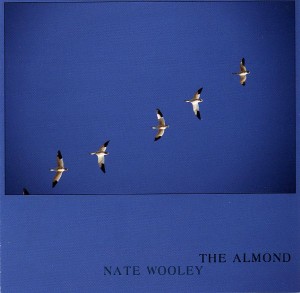
 Sagittarius A-Star is the follow up label to Qbico and has quickly unleashed a good number of LPs. Â This particular gem was retrieved from the archives of Hartmut Geerken and finds him in a quintet recorded in the city of Heliopolis, Egypt during the month February of 1972, also known as the month Muharran in the Muslim year 1392. Â Joining Geerken are Michael Ranta, Hubertus von Puttkamer, Omar el Hakim, and Salah Ragab. Â Apparently this was a one off meeting of the minds as the group name seems to have only been applied now that this music is being published on vinyl 40 years later. Â It is an interesting grouping and probably one whose members do not ring a lot of bells unless you read lots of little details on various records. Â So a little background…
Sagittarius A-Star is the follow up label to Qbico and has quickly unleashed a good number of LPs. Â This particular gem was retrieved from the archives of Hartmut Geerken and finds him in a quintet recorded in the city of Heliopolis, Egypt during the month February of 1972, also known as the month Muharran in the Muslim year 1392. Â Joining Geerken are Michael Ranta, Hubertus von Puttkamer, Omar el Hakim, and Salah Ragab. Â Apparently this was a one off meeting of the minds as the group name seems to have only been applied now that this music is being published on vinyl 40 years later. Â It is an interesting grouping and probably one whose members do not ring a lot of bells unless you read lots of little details on various records. Â So a little background…